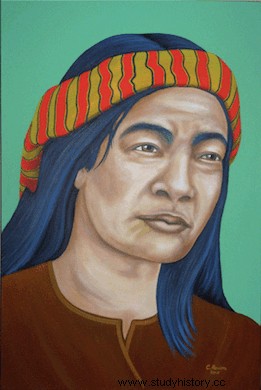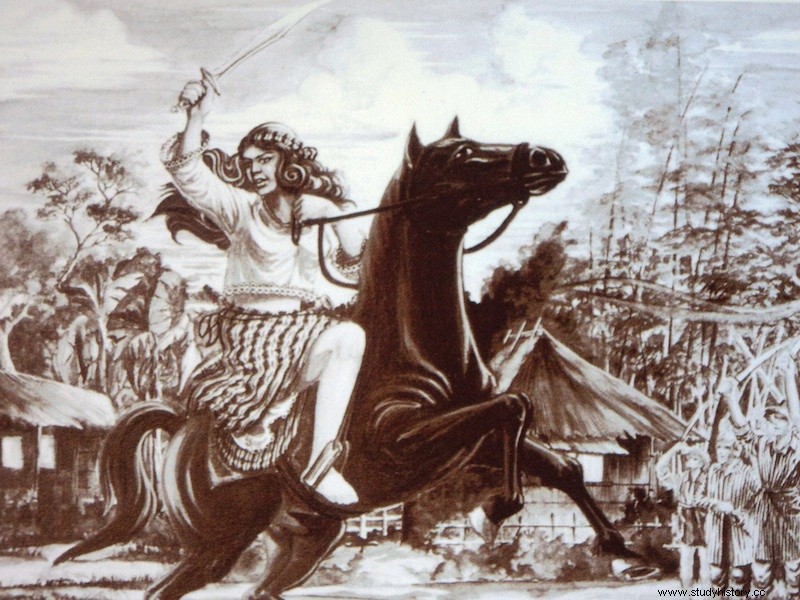María Josefa Gabriela Cariño Silang (1731 – 1763) was the first woman to lead a revolution in the Philippines against the Spanish occupier. When her husband died, she took over to lead the movement, until her own arrest and execution.
A youth under the Spanish occupation

María Josefa Gabriela Cariño was born on March 19, 1731 in Santa (Ilocos Sur province in the Philippines) to a mother of the indigenous Tinguian (or Itneg) people and the Spanish merchant Anselmo Cariño. At that time, the Philippines was under Spanish domination, and the colonial authority manifested itself mainly through the Church and its hierarchy, priests and religious. The occupation is not accepted smoothly, and revolts break out regularly.
In her early childhood, Gabriela was separated from her mother and raised by her father. While attending primary school at a convent, she received religious education from the local parish priest. When she reached 20, her father arranged a marriage between her and Tomás Millan, a wealthy merchant who died three years later.
Widowed, Gabriela met Diego Silang, an insurgent leader against the occupier whom she married in 1757. A major conflict between certain colonialist powers and taking place simultaneously on several continents, the Seven Years' War broke out the previous year.
The revolt against the Spaniards
In 1762, England declared war and Spain and British forces, using Indian troops, landed in the Philippines. They met little resistance there and captured Manila in 1762. Diego and Gabriela Silang saw the events as a unique opportunity to get rid of the Spanish officials and replace them with native Filipinos. Supported and advised by his wife, who became his unofficial aide-de-camp, Diego collaborated with the British and was appointed governor of the province of Ilocos Sur. England promises him military support to fight against the Spaniards, but this support will never arrive.
The Spaniards react by putting a price on Diego's head. In May 1763, two of his former allies, Miguel Vicos and Pedro Becbec, assassinated him. In order not to suffer the same fate as her husband, Gabriela, widowed for the second time, fled to Tayum (province of Abra, in the Philippines). She took refuge there with her uncle, Nicolas Cariño, before taking over from her husband at the head of the revolt against the Spanish occupier. While Diego's death shattered the rebels' hope, Gabriela restores their confidence. She begins by appointing two first generals, Miguel Flores and Tagabuen Infiel, establishes a new base, gathers the rebel troops and leads them into battle. The popular image represents the Generala on horseback, fighting with a bolo knife (a weapon similar to a machete).

La Generala
Gabriela Silang scores a stunning first victory by liberating her hometown, Santa. Defeat prompts Spaniards to redouble efforts to defeat La Generala , the first Filipina to threaten them. She then established a new camp at Pidigan, where she would have seen her mother again, from whom she had been separated as a child. In September 1763, the Generala and its troops descended on the city of Vigan to besiege it. She leads several attacks, more or less victorious, against the Spanish troops. Casualties were heavy on both sides, and when the assaults ended, the rebel forces were overwhelmed by the enemy. Gabriela tries to flee but troops led by Miguel Vicos, one of her husband's assassins, capture her with several dozen of his lieutenants.
On September 20, 1763, Gabriela Silang and her men were hanged in the central square of Vigan. After an American and then Japanese occupation, the Philippines regained its independence in July 1946. Gabriela Silang remains a symbol of the Filipino fight for independence, and of the place that women held in it.
